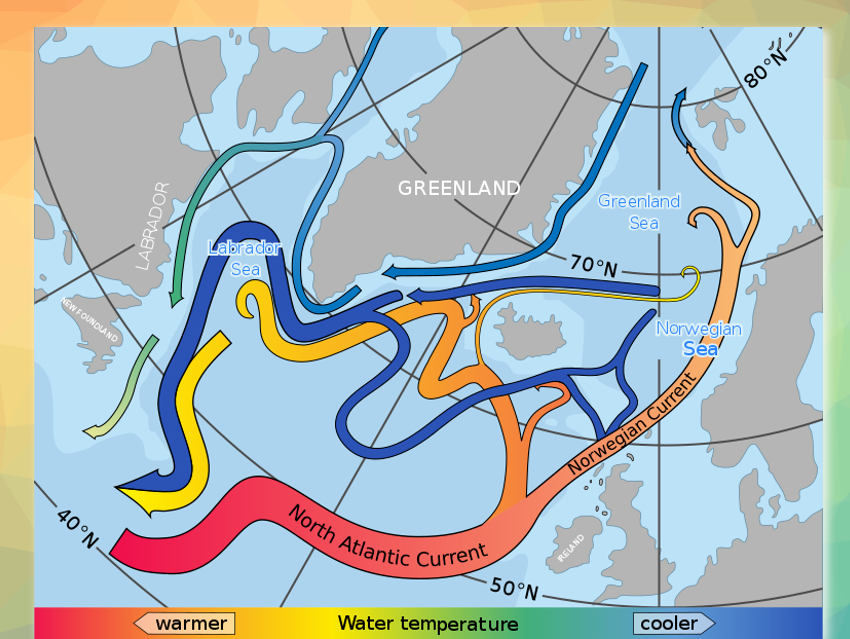The Atlantic Meridional Overturning Circulation (AMOC), to which the Gulf Stream also belongs, transports warm water masses from the tropics at the ocean surface to the north and cold water at the ocean floor to the south. This is of great importance for, e.g., the relatively mild temperatures in Europe.
It is known from computer simulations and paleoclimatic data that the AMOC can adopt two distinct modes: the currently prevailing strong mode and a second, substantially weaker mode. This bi-stability suggests that abrupt changes between these two flow modes are possible in principle.
If the AMOC changes modes, this could have drastic and possibly irreversible consequences for the global climate. Until now, it was unclear whether the current changes herald an overturning or merely represent linear, fundamentally stable fluctuations.
Niklas Boers, Potsdam Institute for Climate Impact Research (PIK), Germany, and Exeter University, UK, analyzed eight different indicators for temperature and salinity of the Atlantic Ocean and looked for signs of destabilization in the time series. These include increasing fluctuations, as well as increasing autocorrelation of the measured values. This means that deviations from the mean are increasingly followed by similar fluctuations.
Boers determined the factor λ as a measure for these signs. For stable system states, λ is negative. λ = 0 marks the tipping point. There the control parameters reach the critical value at which the abrupt change happens. The researcher found that the factor λ has increased almost linearly over the last century from values near –1 to near zero. This is reflected in the increased fluctuations and increasing autocorrelation of temperature and salinity in the North Atlantic. The researcher observed this pattern of increasing instability in all eight parameters studied.
This means that the system is approaching a critical threshold. Many previous climate models did not predict such an early response of the AMOC to climate change. This is probably because the meltwater inflow from the North Atlantic has been underestimated. According to the researcher, there is now an urgent need to fit the models to the observational data.
Some simulations indicate that the circulating flow could collapse even before the critical threshold of λ = 0 is reached. In accordance with this, another team of researchers had recently found that particularly rapid warming can cause the AMOC to overturn prematurely. The current climate change is comparatively rapid [1].
- Observation-based early-warning signals for a collapse of the Atlantic Meridional Overturning Circulation,
N. Boers,
Nat. Clim. Chang. 2021, 11, 680–688.
https://doi.org/10.1038/s41558-021-01097-4
[1] Johannes Lohmann, Peter D. Ditlevsen, Risk of tipping the overturning circulation due to increasing rates of ice melt, Proceedings of the National Academy of Sciences 2021. https://doi.org/10.1073/pnas.2017989118


![Synthesis of [c2]Daisy Chains via Mechanochemistry](https://www.chemistryviews.org/wp-content/uploads/2025/04/202504_RotaxanesWithSolidStateMechanochemistry-125x94.png)

